How to UnClog A Toilet With Coca, Pepsi, Ice, Baking Soda and More
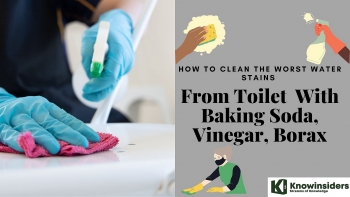 How To Clean the Worst Water Stains From Toilet By Baking Soda, Vinegar, Borax How To Clean the Worst Water Stains From Toilet By Baking Soda, Vinegar, Borax |
 Top 10 Most Popular Toilet Paper Brands in the UK Top 10 Most Popular Toilet Paper Brands in the UK |
 |
| Simple Ways to UnClog A Toilets With Coca, Pepsi, Ice and Baking Soda |
| Table of Content |
When your toilet clogs, the first thing you probably do is break out the plunger to unblock it. However, if the clog is especially tough, your plunger may not be enough. So, what else can you do to clear a badly clogged toilet?
If you find yourself without a plunger or if using a plunger doesn't work, consider your unclogging options before hiring a plumber. There are a number of ways to take care of a toilet overflow or toilet clog, many of which require nothing more than the items you already have in your bathroom or kitchen cabinets.
With a little practice and a plunger or a toilet snake, even a home repair rookie can get most clogged toilets back up and running in minutes.
What Causes the Clogging?
An Old-Gen Toilet
Sometimes, it is the toilet itself that is causing the problem. An old generation toilet is one of the most problematic considering its low-flush nature. This type of toilet is prone to causing problems connected to low water pressure.
Modern-day toilets come with low-flow designs that focus on water consumption and efficiency.
Flushing Non-Flushable Items
There is probably something that prevents the waste from flowing down when there is clogging. In addition, people frequently continue flushing a number of non-flushable items.
Feminine products are at the top of the list of things you should never flush down the toilet. These are the tampons and pads that enlarge upon flushing. They also take a very long time for the sewer system to decompose them.
Your paper towels and cleaning wipes come next. Even though they are "flushable," that does not mean they cannot harm your pipes, despite what the packaging claims. Instead, think about using discarded rags or compostable paper towels, which you can dispose of after use.
Additionally, you ought to refrain from flushing cotton balls and Q-tips. These things are easily able to clump together when they become wet. If this takes place, they might clog your pipes.
Too Much Toilet Paper
Though toilet paper is flushable, too much of it can lead to clogging. Yes, toilet paper disintegrates faster than your wipes and paper towels. But flushing too much may contribute to a backup.
This happens when there is already an existing clog that is building up in your pipes. Toilet paper may compound the situation when it mixes with other debris.
How to Test the Drainage of a Toilet That Won't Flush
Remove the tank lid, slightly lift the flapper valve to let a cup or two of water into the bowl, and check to see if the water goes down before attempting to forcefully unclog the toilet. However, be prepared with towels because flushing a clogged toilet could cause your floor to flood.
How to Unclog a Toilet With a Plunger
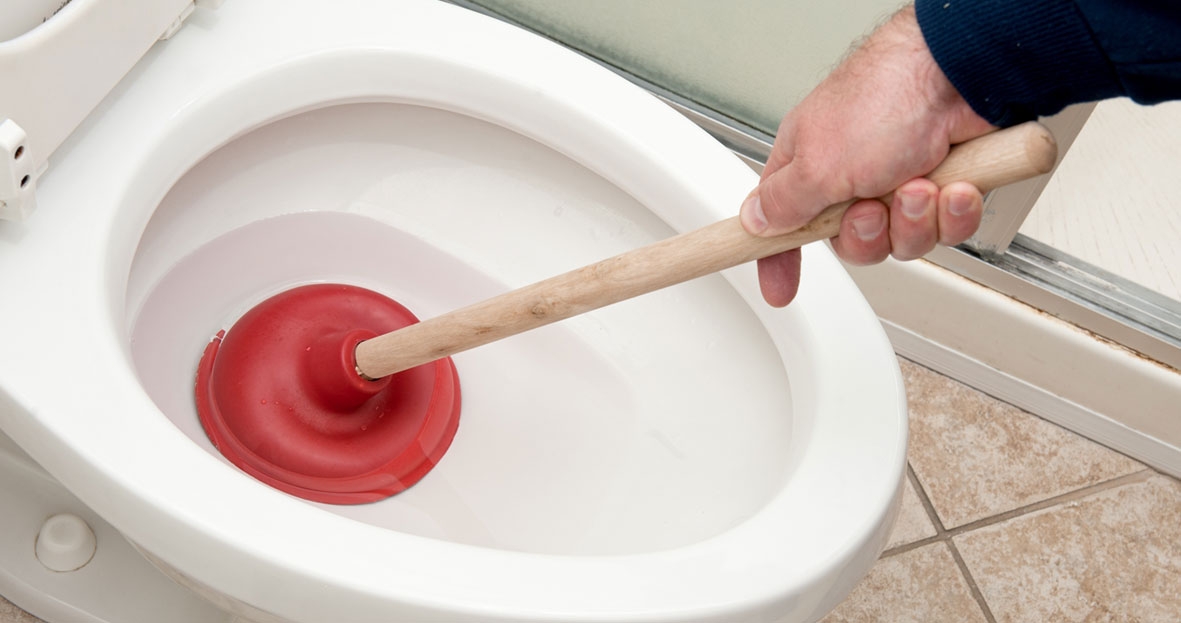 |
| Photo: homeserve |
You only need one special tool, a toilet plunger, to unclog about 90% of toilets. Purchase a plunger for the toilet that has an extension flange on the rubber bell end.
To deliver more "oomph" to the plunge, a toilet plunger with an extension flange is made to fit toilets better. If you simply fold the flange back into the bell, the toilet plunger will unplug sink and bathtub drains as well.
How To Use a Plunger
To get a better seal, first plunge the toilet with the rubber flange pulled out. Maintaining enough water in the bowl to cover the plunger while you forcefully push in and out. Always have towels on hand to mop up any water that may splash.
Plunging Tips
A toilet plunger fits over and seals the toilet drain. Wear rubber gloves — things can get messy— and follow these plunging tips:
• Make your first plunge a gentle one. Initially, the bell will be full of air. A hard thrust will force the air back around the seal and blow water all over the bathroom and you!
• Once you force out the air, plunge vigorously in and out, maintaining the seal. You'll be forcing water in both directions in the drain, which will effectively loosen most clogs. Stick with it, plunging 15 to 20 times if necessary.
• Be patient. Try alternating between steady strokes and occasional monster heaves.
• Keep enough water in the bowl so the toilet plunger stays covered. Trying to force air through the toilet trap won't generate much pressure.
Most of the time, plunging is all it takes to clear the clog. But for tougher clogs, try using a toilet snake.
♦ All the frequently asked questions about effectively using a plunger Here!
How to Unclog a Toilet Without a Plunger
1. Use warm water to unclog drains
Because hot water above 100 degrees C runs the risk of damaging the toilet enamel layer and degrading the drainage pipe, it is advised to use warm water between 50 and 70 degrees C. Too-hot water can also cause the pipes to crack.
You can pour warm water directly into the drain hole if the obstruction is being caused by too much food, toilet paper, organic material, etc. This approach cannot be used if the obstruction was caused by a metal or plastic object.
2. Use Vinegar and Baking Soda
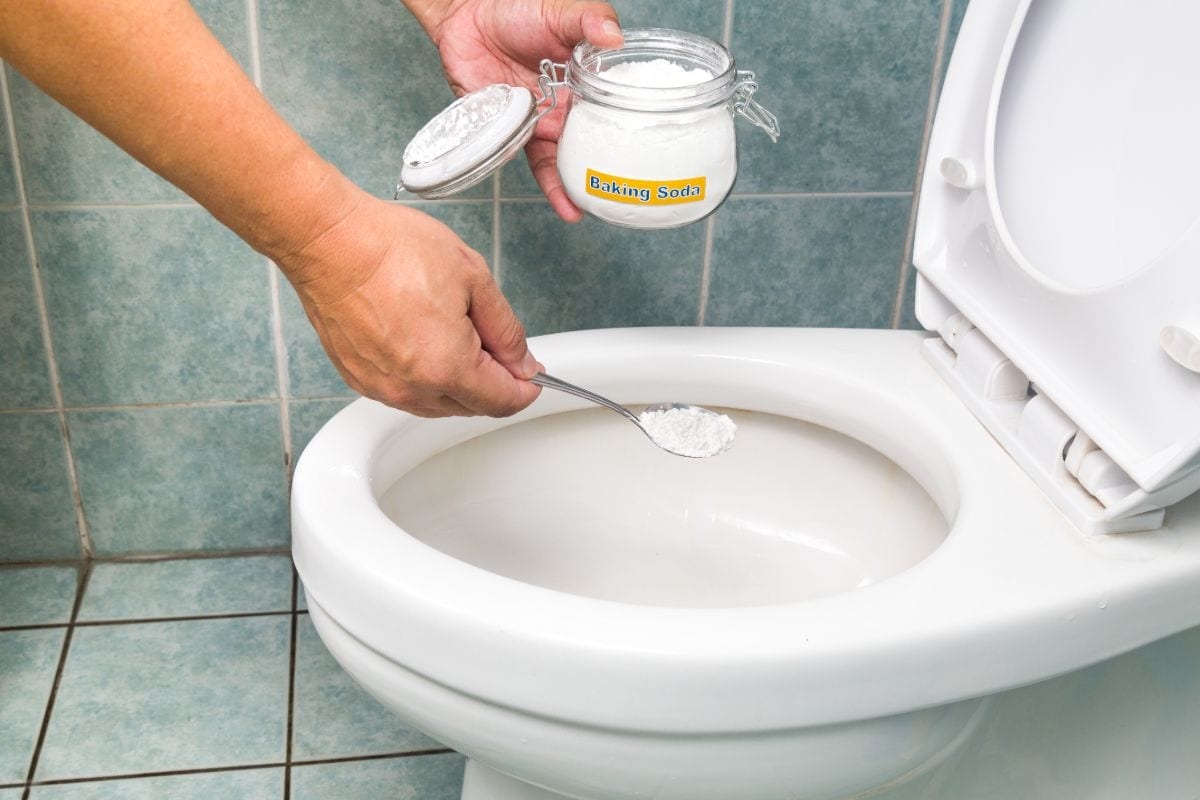 |
| Photo: greenhouseplumbing |
When your toilet won't flush and you don't have a plunger, you can use vinegar and baking soda, two non-toxic household cleaning products. You probably already know that vinegar and baking soda work wonders for cleaning a variety of surfaces, are excellent deodorizers, and help to keep our drains clear.
If you don't have a plunger, these household cleaners can also be used to unclog a toilet. For clogged toilets, we advise adding a cup of baking soda and waiting a few minutes. After that, slowly pour two cups of vinegar into the toilet.
You should pour vinegar and baking soda cautiously and slowly to avoid the toilet water overflowing or splashing because vinegar and baking soda typically react to create bubbles. Give the vinegar and baking soda mixture a few minutes to work.
To see if the obstruction has been cleared, flush your toilet. Until the clog is cleared, you might need to repeat the procedure. When your toilet makes a quick suction sound and then drains normally, the obstruction has been removed.
Related: Baking Soda Hacks For House Cleaning
3. Using a Plastic Bottle
To unclog your toilet, you can also try using a plastic bottle. Be aware that this can be incredibly gross, but it's also very effective, so we recommend giving it a shot. First, remove the bottom from a plastic bottle.
Next, put on old clothes and rubber gloves, and line the floor with newspaper or old towels to catch any spills. After that, use a small container to drain the contaminated toilet water.
Grab the bottle once you've drained just enough water so that you can reach your hand into the bowl without it overflowing. To make a seal, you can either leave the bottle's lid on, put your thumb over the top, or wrap some plastic wrap around it and secure it with a rubber band.
Finally, forcefully plunge the bottle up and down in the toilet with the open end down. Make sure the bottle is completely submerged. The clog should be forced out and back into the main drain by the vacuum you create.
4. Use A Snake
A plumbing snake might be your best option if your toilet is particularly difficult to unclog. These straightforward tools are very useful, but if you're not careful, they can get messy. The flexible end of the snake should first be carefully inserted into the toilet drain. Navigate it until you reach the clog. To remove the obstruction, turn the snake's handle. The snake should then be steered back out of the drain. To prevent a messy situation, carefully remove it.
5. Buy or Make an Enzyme Cleaning Agent
Enzyme cleaners use live bacteria and enzymes to break down debris. They are a secure and healthy substitute for harmful chemicals. Traditional drain cleaners can be dangerous for your family and your plumbing system. While it may be tempting to use bleach to clear a blockage, enzyme cleaning agents are much safer. With the recipe below, you can even create your own DIY enzyme solution:
2 cups citrus rinds (older), such as lemons, limes and/or oranges
1/2 cup brown sugar
1 tsp. baker's yeast
4 cups water
Your fruit peels should be finely chopped. After that, carefully pour all of the ingredients into a 2-liter bottle (a typical soft drink bottle), and shake well. Because it will take roughly a month for the enzyme cleaner to form completely, mark the date you make it in your calendar. You must shake the solution gently twice daily until it has sufficiently fermented in order to release any trapped carbon dioxide. To do this, open the bottle. After a month has passed, strain the fruit peel chunks out and transfer the mixture to a brand-new spray bottle. It can now be kept at room temperature and is ready for use.
6. Use coca-cola, Pepsi
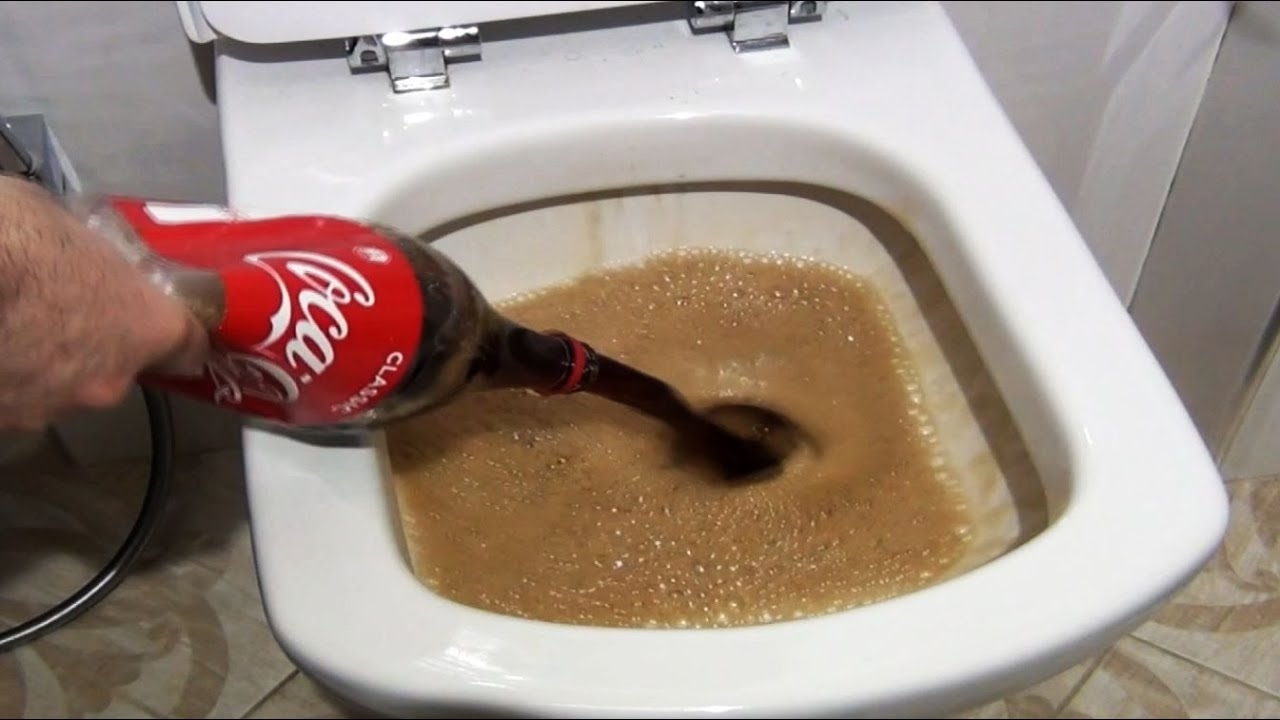 |
| Photo: Youtube |
Coca-cola, Pepsi is one of the highly appreciated, cheap ways to fix clogged toilets that are easy to find on the market today. The composition of Coca contains many different acids that work to decompose waste, clogged toilet paper, and unclog sewer pipes.
You only need to use 01 1.5 liter bottle of Coca-cola or Pepsi poured into the clogged pipe. Then wait for about 2 hours for the acid in the Coca-cola to decompose the waste in the toilet. Press back with hot water to clear the toilet completely.
7. Use Helping Hanger
You can make your own drain snake out of a wire coat hanger from your closet if you don't have access to one. Simply unwind the hanger so that it is straight all the way through, excluding the hook. Then, while wearing rubber gloves, gently angle the hanger down the drain until you find the clog. Before doing this, wrap a small piece of cloth around the hook to help prevent scratches or other damage to the porcelain. Flush the toilet a few times to clear it out once the water begins to drain.
8. Use Dish Soap
Every home has dishwashing liquid on hand for cleaning purposes. Dishwashing liquid and boiling water are frequently used to unclog clogged toilets because they work well, are inexpensive, and are very simple to use.
Find a measuring cup, and flush your toilet with half a cup of dish soap. Give your soap enough time to reach the clog in your drain—roughly five to ten minutes. Add hot (but not boiling) water after that, and let it sit. Dish soap acts as a lubricant, loosening debris and lubricating your clog.
If you don't have any extra dish soap, you can also break up a bar of soap and flush the pieces down the toilet.
9. How to unclog a toilet with ice
In public restrooms, you'll frequently see people putting ice cubes in the toilet or the men's urinal. Do you ever pause to consider your actions? Effective deodorization of the toilet and toilet can be achieved by placing ice in the toilet. It can also be effectively used to handle unexpectedly clogged drains and toilets.
Dropping cold ice into sewer and toilet pipes will cool them. The internal obstructions now shrink as a result of the cold heat and are simple to slide down below.
Here's how to clear a clogged toilet: Place one to two kilograms (kg) of ice cubes in the toilet, along with as many lemon slices as you like, and wait until the ice melts and the toilet begins to cool. To see if the toilet is clogged or not, you flush it again. Try it now to see the amazing results! The cold temperatures will cause the obstruction to shrink and slide down the drain.
10. Use Drain Cleaners (Bio Ben)
 |
| Photo: eva |
While chemical drain cleaners are not advised due to the risk of plumbing damage and chemical burns, we do advise trying an enzyme or bio cleaner, such as BioBen. The Environmental Protection Agency (EPA) has approved this product as being environmentally safe.
• Pour the measured amount of BioBen down the toilet.
• Wait for BioBen to clear the toilet clog.
• Flush the toilet.
BioBen claims it can continue to work in your pipes to keep flowing free of clogs for up to a month.
How to Avoid Clogging Your ToiletBe preemptiveWhen you flush, if the water drains more slowly than usual, your toilet may be partially clogged. Plunge the toilet several times to break up and flush out any debris. By taking proactive measures, you can remove the obstruction before it worsens and completely clogs the toilet. Use less toilet paperToo much toilet paper flushed down the drain will clog it. Use only the necessary amount of paper to prevent a blockage. Don't let small children decide how much paper to use if you have small children because they frequently use too much. Either pre-portion out a sufficient amount of paper, or buy some flushable, moistened, pre-portioned children's toilet paper. Clear the TanksNever use the toilet tank as extra counter space. Avoid placing items like soap, tissue paper, and brushes on top of the toilet tank. You may accidentally knock down these items into the bowl. Regular Cleaning a MustAlways keep your toilets clean. Cleaning your toilet makes it easier for you to find potential leaks faster, even though it involves more of the aesthetics side of things. You can find out if there is water pooling or dripping on the floor by cleaning your toilet. From there, you can identify the source of the dripping and take immediate action. Conduct Inspections Twice a YearLast but not least, make sure to check your toilet's internals twice a year. The proper operation of all the important components will be helped by thorough inspections. It will also assist in determining whether you need to replace some fixtures or install upgrades. In the long run, replacing an old toilet can be more cost-effective. |
 How to Teach Reading for Kids at Home with Simple Tips How to Teach Reading for Kids at Home with Simple Tips With the abundance of information out there, it can seem like there is no clear answer about how to teach a child to read. Here ... |
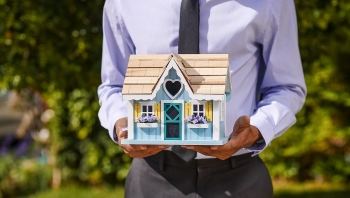 Tips All Landlords Need to Know Tips All Landlords Need to Know Many landlords can live off of residual income as part of a retirement plan. |
 10+ Simple Tips to Cool Down A Hot Laptop or PC in A Few Seconds 10+ Simple Tips to Cool Down A Hot Laptop or PC in A Few Seconds What is the fastest way to cool down a PC? Find out the best tips on how to reduce the temperature of your laptop or ... |























